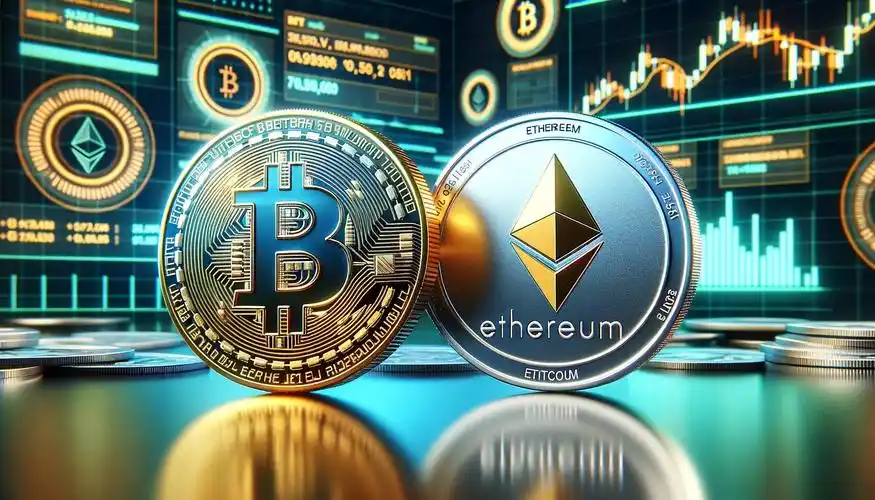The general rise of Ethereum ecosystem altcoins (typically referring to ERC-20 tokens other than ETH) is usually not caused by a single reason but is driven by a combination of multiple factors.
Here are several core reasons that often act simultaneously to form a market synergy:
1. The guiding role of Bitcoin and Ethereum (the transmission of broad market Beta trends)
The cryptocurrency market has a high degree of interconnectedness, with Bitcoin (BTC) being the absolute leader and barometer.
· BTC rises driving ETH: When Bitcoin rises due to reasons such as ETF approvals, halving expectations, and macro environments (like interest rate cut expectations), it brings tremendous attention and capital inflow to the entire cryptocurrency market.
· ETH rises driving the ecosystem: As the 'second pillar' of the cryptocurrency market, Ethereum's (ETH) price increase significantly boosts investor confidence in the entire Ethereum ecosystem. Investors believe that if the 'mother ship' ETH has risen, then the quality 'escort ships' (altcoins) built on its ecosystem also have greater upside potential and space. This forms a chain of capital and confidence transmission: BTC → ETH → ETH ecosystem altcoins.
2. Significant benefits from Ethereum itself (the cornerstone of ecosystem development)
The significant upgrades and technological advancements of Ethereum itself are the foundation of the ecosystem's prosperity. The most important recent good news is:
· 'Cancun Upgrade': This upgrade was completed on March 13, 2024, and its core feature EIP-4844 (Proto-Danksharding) significantly reduced the cost of submitting data from Layer 2 networks (such as Arbitrum, Optimism, Polygon, Base, etc.) to the Ethereum mainnet.
· Result: L2 transaction fees have decreased by dozens or even hundreds of times. This means:
· Enhanced user experience: Users experience almost no transaction fees when using DApps on L2, providing an experience comparable to Web2 applications, attracting a large number of new users.
· Increased developer activity: A low-cost environment encourages developers to deploy and innovate on L2, resulting in more new applications.
· Ecosystem prosperity: More applications and users are settling on L2, improving the 'fundamentals' of the entire Ethereum ecosystem, thereby boosting the value of related tokens within the ecosystem.
3. Changes in market risk appetite and sector rotation (capital direction)
The flow of funds in a bull market has its specific patterns:
· From stable to aggressive: In the early stages of a bull market, funds first flow into the most stable core assets like BTC and ETH. Once their prices reach a certain height, investors' risk appetite begins to increase.
· Sector rotation: In pursuit of higher returns, funds partially flow out from BTC and ETH, which have seen significant gains, and instead flood into smaller market capitalization, more volatile altcoins. Altcoins in the ETH ecosystem, due to their actual ecosystem and technological support, often become the preferred destination for this wave of capital rotation.
4. Speculation on specific tracks and narratives (Alpha opportunities)
Within the Ethereum ecosystem, there will always be some hot tracks that attract a lot of attention and capital, forming a 'sector effect':
· Restaking: Projects represented by EigenLayer allow users to restake their staked ETH into other projects that require security (like sidechains, data availability layers, etc.) and earn additional rewards. This has given rise to a brand new 'restaking ecosystem', and related tokens are being fervently sought after.
· Layer 2 track: L2 is currently the core narrative for expanding Ethereum. Its native tokens (like ARB, OP, etc.) directly benefit from its on-chain transaction volume and ecosystem explosion. The general rise of L2 tokens will directly drive the token prices of projects within its ecosystem.
· DeFi revival: As the market warms up, the total value locked (TVL) in decentralized finance (DeFi) protocols will rise, and trading volume will increase, leading to price increases for established DeFi blue-chip tokens (like UNI, AAVE, MKR, etc.) and new DeFi project tokens.
· Memecoin frenzy: In a bull market environment, speculative sentiment is strong. Memecoins based on Ethereum and its L2 (especially the Base chain) will explode wildly, and this frenzy will spill over to the entire ecosystem, attracting more speculative funds.
5. Airdrop expectations and points farming ('grabbing wool' activities)
Many emerging projects announce 'airdrops' to attract early users, meaning they distribute tokens for free to early interacting users.
· Interactive mining (Farming): Users engage with these yet-to-launch token protocols (depositing, trading, providing liquidity, etc.) to obtain potential airdrop rewards. This process requires frequent use of ETH and L2 tokens as gas fees, locking funds within the protocols.
· The effect brought: This actually injects a huge amount of 'fresh water' into the entire ecosystem:
· Increased on-chain activity.
· A large amount of liquidity has been locked.
· Creating strong demand, thus driving up the prices of related underlying assets and ecosystem tokens.
Summary
In simple terms, the general rise of Ethereum ecosystem altcoins is a complex phenomenon driven by leading assets, technological upgrades, capital rotation, and ignited by specific narratives and speculative activities.
Risk Warning: The general rise of altcoins is often accompanied by significant volatility and risk. Their gains can be astounding, but their declines can be equally severe. Investors need to deeply understand the fundamentals of projects, avoid FOMO (fear of missing out), and manage risks cautiously.


